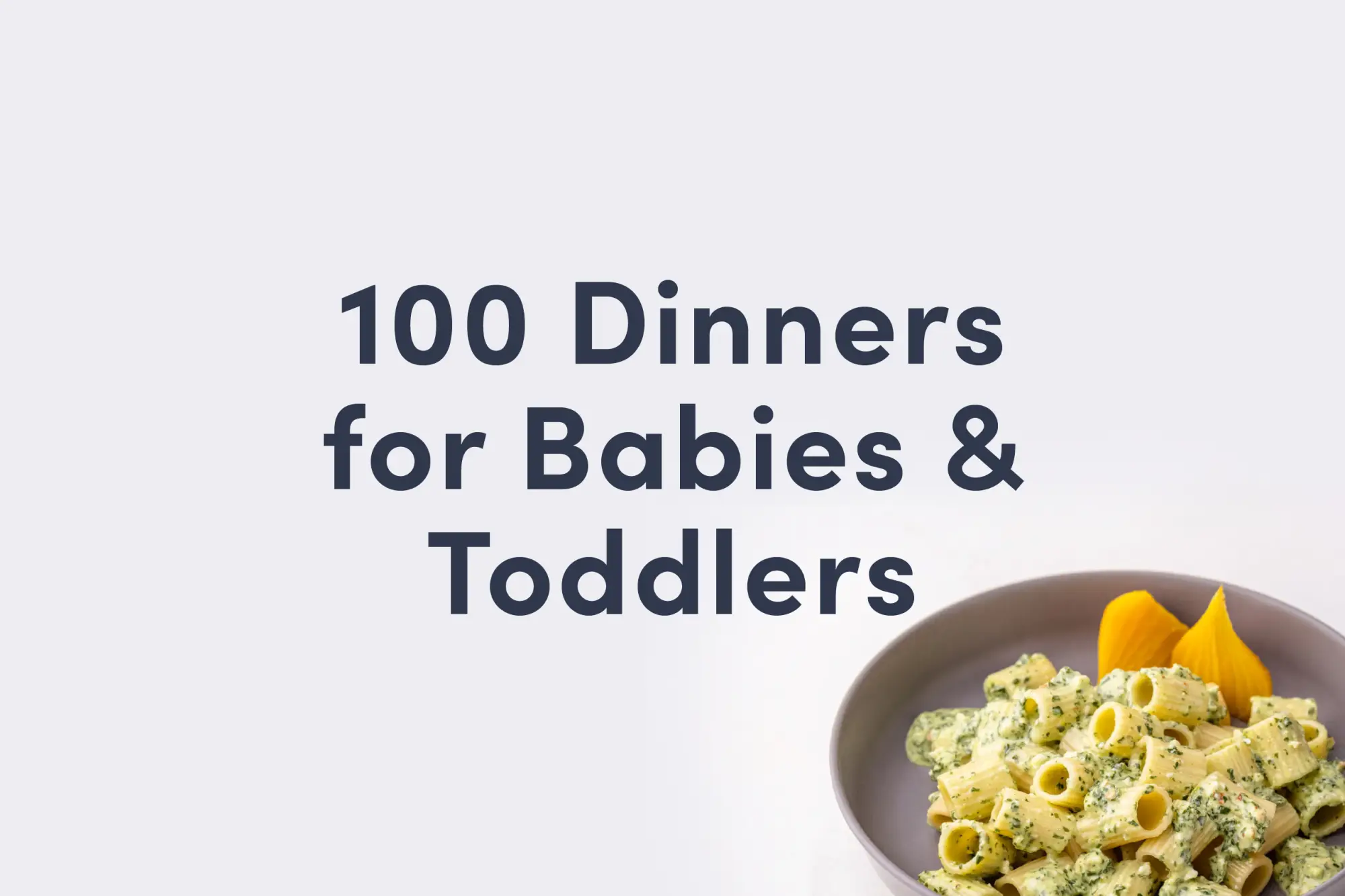Garlic
Vegetable
Age Suggestion
6 months
Iron-Rich
No
Common Allergen
No

When can babies have garlic?
Garlic may be introduced as soon as baby is ready to start solids, which is generally around 6 months old. Many people believe that bland foods are best for babies, but there is no evidence to support this cultural myth. In fact, people around the world introduce alliums like garlic and other flavorful foods early in their solids journey. One study even found that babies nurse longer and ingest more breast milk from mothers who have ingested garlic.
Garlic is native to Central Asia, where it has long been used for a variety of medicinal purposes—from improving respiration to alleviating diarrhea. In cooking, most recipes calling for “garlic” are referring to the aromatic white cloves that make up the bulb. The cloves can be prepared and used in many ways, from raw to roasted to pickled.
Is garlic healthy for babies?
Yes. Garlic is rich in nutrients that are critical for babies at this stage in their development, notably vitamins B6, C, and calcium, as well as copper, manganese, phosphorus, and selenium. What’s more is that garlic varieties abound with phytonutrients like sulfur-based compounds including allicin, ajoene, alliin, and many more. Collectively, these nutrients offer anti-inflammatory, antioxidant, antimicrobial, and anticancer effects; plus, garlic may promote healthy cholesterol levels and heart health, as determined in plenty of studies. Garlic – both raw and cooked – also is particularly beneficial for the gut due to its natural prebiotic content – in other words, fuel for beneficial gut bacteria. Garlic powder or granulated garlic are fine to use in foods to share with baby and offer plenty of nutrients as well. Black garlic is aged garlic and contains a number of beneficial antioxidants.
When it comes to first offering garlic to baby, consider starting slow and small. Sometimes too much of a prebiotic-rich food all at once can lead to gassiness and discomfort.
★Tip: Peeled or chopped garlic preserved in oil is a handy cooking time saver but can be a source of foodborne illness – namely botulism – if prepared and stored improperly. Botulism is a type of food poisoning, for which infants are at higher risk. To minimize risk of botulism, follow safe canning practices, refrigerate after opening, and use within 3-4 days. For more on how to store garlic safely, check out our FAQs here.
Is garlic a common allergen?
No. Allergic reactions to garlic are rare, but not unheard of and, notably, when they have occurred, they have tended to be severe. People who are sensitive to onions or other members of the lily family may also be sensitive to garlic. Of note, some allergens in foods in this family are sensitive to heat, meaning that well-cooked garlic might be well-tolerated in an individual who is sensitive to raw garlic. Individuals with Oral Allergy Syndrome (also called pollen fruit syndrome), and in particular, those with sensitivities to grass pollen and mugwort pollen (a weed) may also be sensitive to garlic. Oral Allergy Syndrome typically results in short-lived itching or burning in the mouth and is unlikely to result in a dangerous reaction. Skin contact with raw garlic has been associated with the development of hand eczema.
As you would when introducing any new food, start by offering a small quantity for the first few servings. If there is no adverse reaction, gradually increase the quantity over future meals.
Is garlic a choking hazard for babies?
No. Cooked garlic presents a low risk when safely prepared for a child’s age and developmental ability, though, in theory, an individual could choke on any food. To reduce the risk, prepare and serve garlic in an age-appropriate way as described in the How to Serve section. As always, make sure you create a safe eating environment and stay within an arm’s reach of baby during meals.
Learn the signs of choking and gagging and more about choking first aid in our free guides, Infant Rescue and Toddler Rescue.
How do you serve garlic to babies?
Every baby develops on their own timeline, and the suggestions on how to cut or prepare particular foods are generalizations for a broad audience.
6 months old +:
You have lots of options. Use grated garlic or garlic powder to flavor congee, mashed vegetables, sour cream or another scoopable food; try drizzling a bit of garlic oil on another age-appropriate piece of food; or spread roasted garlic on strips of toasted bread. You can also share sauces like chimichurri, pesto, or salsa verde. Cooked garlic tastes more mellow than raw, so follow baby’s lead, and if you decide to offer a bite of food that has raw garlic, consider starting with a tiny amount, and make sure the garlic is finely chopped or grated to minimize the risk of choking.
9 months old +:
Serve dishes that contain thin slices of cooked garlic, as well as meals with grated garlic, garlic powder, garlic oil, or soft, spreadable roasted garlic. Cooked garlic tastes more mellow than raw, so follow baby’s lead, and if you decide to offer a bite of food that has raw garlic, consider starting with a tiny amount, and make sure the garlic is finely chopped or grated to minimize the risk of choking.
12 months old +:
Continue to offer food seasoned with garlic as desired, although note that chunks of raw garlic continue to be a choking hazard. Cooked garlic tastes more mellow than raw, so follow the child’s lead, and if the child hasn’t tasted raw garlic before, consider starting with a tiny amount.
For more information on how to store garlic safely for the whole family, check out our FAQs here.
Written by
Expert Tips Delivered to Your Inbox
Sign up for weekly tips, recipes and more!
The content offered on SolidStarts.com is for informational purposes only. Solidstarts is not engaged in rendering professional advice, whether medical or otherwise, to individual users or their children or families. No content on this site, regardless of date, should ever be used as a substitute for direct medical advice from your doctor or your medical or health professional, nutritionist, or expert in pediatric feeding and eating. By accessing the content on SolidStarts.com, you acknowledge and agree that you are accepting the responsibility for your child’s health and well-being. In return for providing you with an array of content “baby-led weaning” information, you waive any claims that you or your child may have as a result of utilizing the content on SolidStarts.com.









